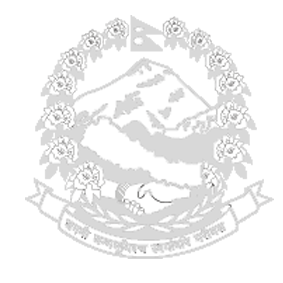




Nepal, a sovereign Independent country , lies between 80 degree 12' east longitude and 26 degree 22' and 30 degree 27' north latitude. It is bounded on the north by the Tibet Autonomous Region of the People's Republic of China; on the east by Sikkim and West Bengal of the Indian Union on the south by Indian States of Bihar and Uttar Pradesh and on the west by Uttar Pradesh of Indian Union. The length of the country is 885 kilometers east-west and its breath varies from 145 to 241 kilometers north-south. Climatically, it lies in the temperate zone with the added advantage of altitude.
The country can be divided into three main geographic regions:
The altitude of this region ranges between 4877 meters and 8848 meters with the snow line running around 48848 meters. It includes 8 of the existing 14 summits in the world which exceed an altitude of 8000 meters. They represent. (1) Sagarmatha (Mt. Everest) 8848 m, (2) Kangchenjunga - 8586 m, (3) Lhotse - 8516m, Makalu - 8463m, (5) ChoOyo- 8201 m, (6) Dhaulagiri - 8167m, (7) Manaslu - 8163m, and Annapurna- 8091 m.
This region accounts for about 64 percent to total land area. It is formed by the Mahabharat range that soars upto 4877 meters. To its south lies the lower Churia range whose altitude varies from 610 meters to 1524 meters.
The low-land Terai region which has a width of about 26 to 32 kilometers and a maximum altitude of 305 meters, which occupies about 17% of total land area of the country. Kechana Kawal the lowest point of the country with an altitude of 70 meters lies in Jhapa District of the eastern Terai.
Nepal is a land of scenic mountains, time-worn temples and some of the best walking trails on Earth. It's a small country, but it's rich in scenic splendor and exotic cultures. The people of Nepal are as diverse as their country and represent distinct cultures and races.
Though they speak a variety of tongues and practice different religions, they are the friendliest people that you would ever meet. Nepal has long exerted a pull on the Western imagination and it's a difficult place to dislodge from your memory once you return. So, wait until you're actually here in Nepal.
As a traveler, there are endless number of surprises Nepal has to offer you. Kathmandu Valley with its thousands of Hindu Temples, Buddhist Stupas, stunning architecture and rich pageantry can be quite beyond words. If you are careful enough not to get entangled in the superficial facade of a fatly "modernizing" capital city, Kathmandu probably offers you as exotic and urban experience as you can get.
Beyond Kathmandu, it’s another world altogether. Most travelers to Nepal want to check out the truly spectacular Himalayas along with the higher hills. A few go there to scale the high mountains, but many are nature lovers who trek along landscapes filled with deep valleys, lush forests, snow trails, terraced fields, and above all, the most hospitable people.
Travelers to Nepal also love making a safari trip to one of the National Parks in Nepal. The most popular one is the Chitwan National Park in the southern plains which hosts a diverse wildlife reserves including the rare Asian one-horn rhino.
All foreign nationals, except Indian Citizens, need visas to enter Nepal.
You need a valid passport, two passport size photos and US$ 30.
Tourists who visit Nepal must hold valid passport and visa.
Entry
Tourist entry visa can be obtained for the following duration from Nepal Embassy/ Consulate or Mission offices abroad, or at the following immigration offices in Nepal:
Tourist Visa
| Visa Facility | Duration | Fee |
|---|---|---|
| Multiple entry | 15 days | US$ 25 or equivalent convertible currency |
| Multiple entry | 30 days | US$ 40 or equivalent convertible currency |
| Multiple entry | 90 days | US$ 100 or equivalent convertible currency |
Tourist Visa Extension
There's no problem on it. The Immigration Department of Kathmandu or Pokhara can extend the visa for another 30 days and the charge for this is US$ 50. Indeed the visa can be extended for a total of 120 days, an additional 30 days visa may be granted on reasonable grounds from the Immigration Office. Nevertheless, a tourist cannot stay in Nepal under tourist-visa for more than 150 cumulative days.
In order to fly directly to Nepal from your home country, Tribhuvan International Airport (TIA) in Kathmandu is the only international airport in Nepal. TIA has direct Air link with, Hongkong, Singapore, Bangkok, Delhi, Dubai, Mumbay ,Doha, Abudabai ,Kuala Lampur ,Istambul Lhasa, Chandu,Guangzhou and Varanasi, Calcutta. Nepal Airlines/,Air India/Jet airways/ Silk Airlines/ Thai Airways/ Qatar air /Etihad airways/ Dragon Air, Air China, China eastern, China southern Turkish airways are the airlines that carry most of the foreign travelers into Kathmandu; and if you buy tickets from any other airlines, you will probably connect with one of these airlines for the final leg of your flight. Alternatively, if you have time and enthusiasm, traveling overland to Nepal via India is an option.
The weather is probably the best guide for deciding when to plan your trip to Nepal. The best time to visit Nepal is between September to December and February to May.
Nepal's national language is called Nepali. It is written in Devnagri Script. This script is the same as the one used in Hindi language - the national language of India.
It is called Namaste or Namaskar is more polite. You can say the greeting in words as well as do it using a gesture. Join your palms together and bring them close to your chest and about 5 to 7 inches below your chin. The word Namaste has many meanings such as Hello, How are you?, I am glad to see you, nice to meet you, good morning good afternoon, etc.
Nepali time is GMT/UTC plus 5 Hours 45 minutes. Area code for dialing to Nepal: Country Code: 977 Kathmandu City Code: 1 (e.g.+ 977 1 4423218 First three digits is the country code, second is the area code, the last digits are telephone numbers.
Nepalese currency is spelled as Nepalese Rupees or Rupee (Rs) or Nepali Rupee, and in short it is written NRS or RS. 100 Paisa equals 1 Rs. Currently Notes of the following denominations are used: 1000, 500, 100, 50, 25, 10, 5, 2, and 1 rupees. Coin hasn't been popular in Nepal and hence is almost always ignored in business. The coins of the following denominations can be found: 1 paisa, 5 paisa, 10 paisa, 50 paisa and 1 Rs, 2 Rs, and 5 Rs. It is recommended that you travel with smaller notes in less populated areas, while large notes are easily accepted else where.
Yes, in Kathmandu and Pokhara. International credit cards (Master Card, Visa Card etc) are also accepted in all leading hotels, shopping centers, bars and restaurants in Nepal.
Please, Contact your service provider and check if Nepal country is included in their `Global roaming' package. Please note, not all parts of Nepal are covered by the GSM Network in Nepal.
Nepal does not require any specific immunization for visitors. It is however best to have vaccine before coming to Nepal. Your doctors can advice you on the type of vaccine to be taken to travel to third world countries like Nepal